Tornados
No place in the United States is completely safe from tornadoes. Every state has experienced at least one documented tornado, and many states, like Kansas, have many tornados a year. A tornado can occur at any time of day, and throughout the year..
Knowing what to do during a storm and having a storm shelter or safe room can save the lives of you and your family.
Tornadoes are only Dangerous on the Ground
MYTH:. It is the circular surface winds that cause the real damage. The debris thrown by the tornado’s winds are very deadly. Some tornadoes are even wrapped in rain that cannot be readily seen.
“Strong, sturdy brick or stone buildings will protect me from a tornado.”
MYTH:Â While such buildings will provide more protection in a tornado than timber frame structure, the winds of a tornado can easily launch a 2×4 through a brick wall, and can cause even the sturdiest of buildings to experience roof or wall failure. That is why underground safety locations provide the most protection.
Bigger Tornadoes are More Dangerous than Smaller Tornadoes
MYTH: Even though a large wedge-shaped tornado appears more powerful, a skinny rope tornado can be among the strongest. It is the speed of the wind that makes a tornado “stronger†and not the physical size.
“When confronted by a tornado warning, you should open the windows in your house to equalize the pressure.”
MYTH:Â This just wastes valuable time. Tornado damage studies have shown that this will do nothing to reduce storm damage.
“I live in a big city, a tornado wouldn’t hit a big city.”
MYTH:Â Tornadoes have hit several large cities, including Dallas, Oklahoma City, Wichita Falls, St. Louis, Miami, and Salt Lake City. In fact, an urban tornado will have a lot more debris to toss around than a rural twister.
“Tornadoes may occur in the middle of the night and even during the winter.”
FACT:Â Although the likelihood is lower at night and during colder months, tornadoes have caused death and destruction during these times of day and year. Violent tornadoes, while very unlikely during the winter months, do occasionally occur at night. When severe weather is forecast, ensure your NOAA weather radio is on and working properly before you go to bed.
“My city doesn’t get tornadoes because it is protected by a river.”
MYTH:Â Many tornadoes have crossed rivers and even gone on to cause widespread damage to riverside cities. For example, the Nachez, Mississippi tornado of 1840 tracked directly down the Mississippi River, killing hundreds, mostly on the water. Others have crossed large rivers without losing speed (they momentarily became water spouts) and devastated cities that folklore had thought immune to tornadoes. An example was the Waco, TX tornado of 1953 that crossed the Brazos River, or the Great St. Louis Cyclone of 1896 that jumped the Mississippi River.
“Tornadoes have picked people and items up, carried them some distance and then set them down without injury or damage.”
FACT:Â People and animals have been transported up to a quarter mile or more without serious injury. Fragile items, such as sets of fine china, or glass-ware have been blown from houses and recovered, miles away, without any damage. However, given the quantity of airborne debris, these occurrences are the exception, rather than the norm.
“Hiding under a freeway overpass will protect me from a tornado.”
MYTH: While the bridge may offer some protection against flying debris, the overpass also acts as a wind tunnel and may actually serve to collect debris. When you abandon your vehicle at the overpass and climb up the sides, you are doing two things that are hazardous. First, you are blocking the roadway with your vehicle. Second, the winds in a tornado tend to be faster with height. By climbing up off the ground, you place yourself in even greater danger from the tornado and flying debris. When coupled with the accelerated winds due to the wind tunnel (Venturi Effect), these winds can easily exceed 300 mph. Note: If a highway overpass is your only shelter option, only consider it if the overpass has sturdy roadway supports, next to which (at ground level) you can take shelter. Avoid the smooth concrete, support-less spans at all costs.
“I can outrun a tornado, especially in a vehicle.”
MYTH:Â Tornadoes can move at up to 70 mph or more and shift directions erratically and without warning. It is unwise to try to out race a tornado. It is better to abandon your vehicle and seek shelter immediately.
“Tornadoes are more likely to hit a mobile home park.”
MYTH:Â Not so. It just seems that way for two reasons. First, mobile home parks are a ubiquitous part of our landscape. There are tens of thousands of mobile homes in tornado alley, so there is a pretty good likelihood that some of them will be in the path of a tornado. Unfortunately, the second factor is that mobile homes offer little to no protection against even the weakest tornadoes, so when a tornado does strike a mobile home park, the damage is more likely to be significant. Winds that would only lift some shingles on a frame house can easily flip a mobile home.
“To keep from being sucked into the tornado, can tie myself to a well pipe, just like they did in the movie “Twister”.”
MYTH:Â While it is unlikely that a tornado will dislodge a deeply buried pipe, the rope you tie around yourself is more likely to act as a combination tetherball and cheese slicer. Lighter winds will likely cause you to be whipped around at the end of the rope, banging against anything within the radius of the rope. Stronger winds inside the tornado are just as likely to pull your body from the rope (and possibly not in one piece).
“A tornado can drive a straw through a telephone pole.”
FACT:Â The forces inside a tornado are incredible, and still poorly understood. But they are certainly strong enough to turn otherwise harmless items into deadly missiles.
“A tornado is not coming directly at me, I am safe.”
MYTH:Â Tornados have been known to act erratically, often changing directions quickly. Sturdy shelter is the only safe place to be during a tornado. Although it may be tempting to follow a tornado to get a cool photo, please leave the tornado chasing to trained meteorologists.
Information based upon:Â NOAA
Preparing For A Tornado or Other Disaster
Your in-ground storm shelter will protect you and your family. There are additional steps you should take to help reduce the aftermath of a tornado or other severe storm damage.
01. Take an inventory of your personal assets.
If a tornado strikes your home valuable papers may be found in surrounding states and you may not be able to prove what you own. You should create a detailed list of your personal property and critical financial documents and store them in a fire-proof box. Your storm shelter or a bank vault can be an excellent location for these files. If you are worried about theft from your garage your storm shelter installer can work with you to secure a metal fire box to the floor of your storm shelter. The box should contain receipts, pictures, video recordings, and critical financial information.
*The following information was derived from the State Farm Insurance website.Â
Choose A Inventory Method
There are several ways to create an effective home inventory.
The easiest do-it-yourself inventory approach is to make a video walk-through or take a series of photographs of your home. This visual record can stand alone as your inventory, but for added security combine the photos with another inventory method.
For a more customized inventory method you can also use a spreadsheet. If you are not a whiz on spreadsheets there are many in-expensive home inventory software programs.
Your Home Inventory Should Include:
A good way to make sure that you get everything on the inventory is to inventory each room at a time. Pay special attention to the most valuable items, such as antiques, jewelry, and electronic equipment. Don’t forget to include items in your basement, attic, garage, and any detached structures such as tool sheds.
What Information Should you Record
Your home inventory should include as much of the following information as possible:
- What:Â Provide a brief description of each item in your home. This should include the brand name, model name, and serial number. Establish ownership by attaching receipts and/or photos whenever possible. Update your inventory regularly to add or remove items.
- When:Â Record the purchase or acquisition date for each item. Attach receipts, when possible. Any documentation which can help establish value is important. If an item was appraised be sure to include information about the appraiser.
02. Review your insurance policies.
Many people find out after a tornado has destroyed their home that they were under-insured. Once you have taken your home inventory look at the replacement cost and then schedule an insurance review with your agent.
03. Make sure that friends and family know about your in-ground storm shelter.
Storm defense shelters will notify authorities of their customers in any neighborhood which has been damaged by a tornado or major wind storm. You should also make sure that people who you can rely on that are not living in the area also know that you have a storm shelter. Please ask them to also call authorities if they do not hear from you after a major storm.

